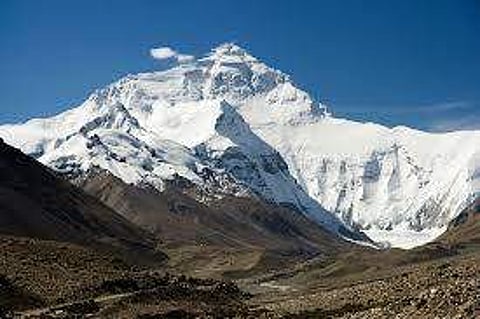

Many people dream of climbing Mount Everest, but very few manage to. It takes years of physical fitness training, a single-minded determination, skill, and of course, a little bit of luck. But when you are a 50-year-old like Aditya Gupta, the task looks twice more daunting. Nevertheless, Aditya put his mind to it and managed to achieve it.
It was in 2014 that he first tried climbing Everest. But, there was a major avalanche that year and about 16 people died just 300 metres away from Aditya's tent. In 2019, when he turned 50, he attempted it again and was successful.
At a recent TEDx talk held by Xavier School of Management, TEDxXLRI 2021, he shared three important tips to survive the storms in life based on his mountaineering experience. He says, "As a mountaineer, fitness is not just about physical fitness, it's emotional intelligence, mental toughness and a lot more. When you deal with challenges, you may have your own Everest to face."
Excerpts...
Lesson 1: Make friends with fear
"I often get asked if I wasn't afraid to scale Everest. Of course I was. And I think it's good to have insecurities if it helps you prepare better. It's not about not being afraid, but acknowledging what is there to fear and preparing to deal with it. After Everest base camp, there's this area which is prone to avalanches and earthquakes called the Kumbu ice fall. At least 15-20 people give up on the expedition after this point. Then there's camp 4, the highest camp. We reached there on May 19 and it was so stormy. So we had to spend an extra night in the death zone. It was almost impossible, but we had carried extra oxygen cylinders for the purpose of rescue. We were afraid of those things happening, but we were safe because we were prepared.
Lesson 2: There are known risks, but also unknowns
You cannot predict everything no matter how much you plan. About 45 minutes to camp 4, I looked at my pressure gauge and I realised that I didn't have any more oxygen. In such situations, it's easy to panic and get thrown off. It's important to stay calm. My friends had gone ahead and I had to come back alone. That week, 12 people had died on Everest. Our main guide and leader abandoned the group one day before the summit camp. We had to go with a junior sherpa. It took us 11 hours to reach the summit. I had half a bottle of oxygen left, a little water, no food and no sherpa. Expecting the unexpected and being able to focus on what you need to do was a big lesson.
Lesson 3: Use the power of focus
There's always going to be negatives and positives. If you make a mistake, Everest doesn't give you second chances. If your focus is on the opportunity, and you don't get deterred by the threats around, things get done. How you deal with storms depends on your focus.
